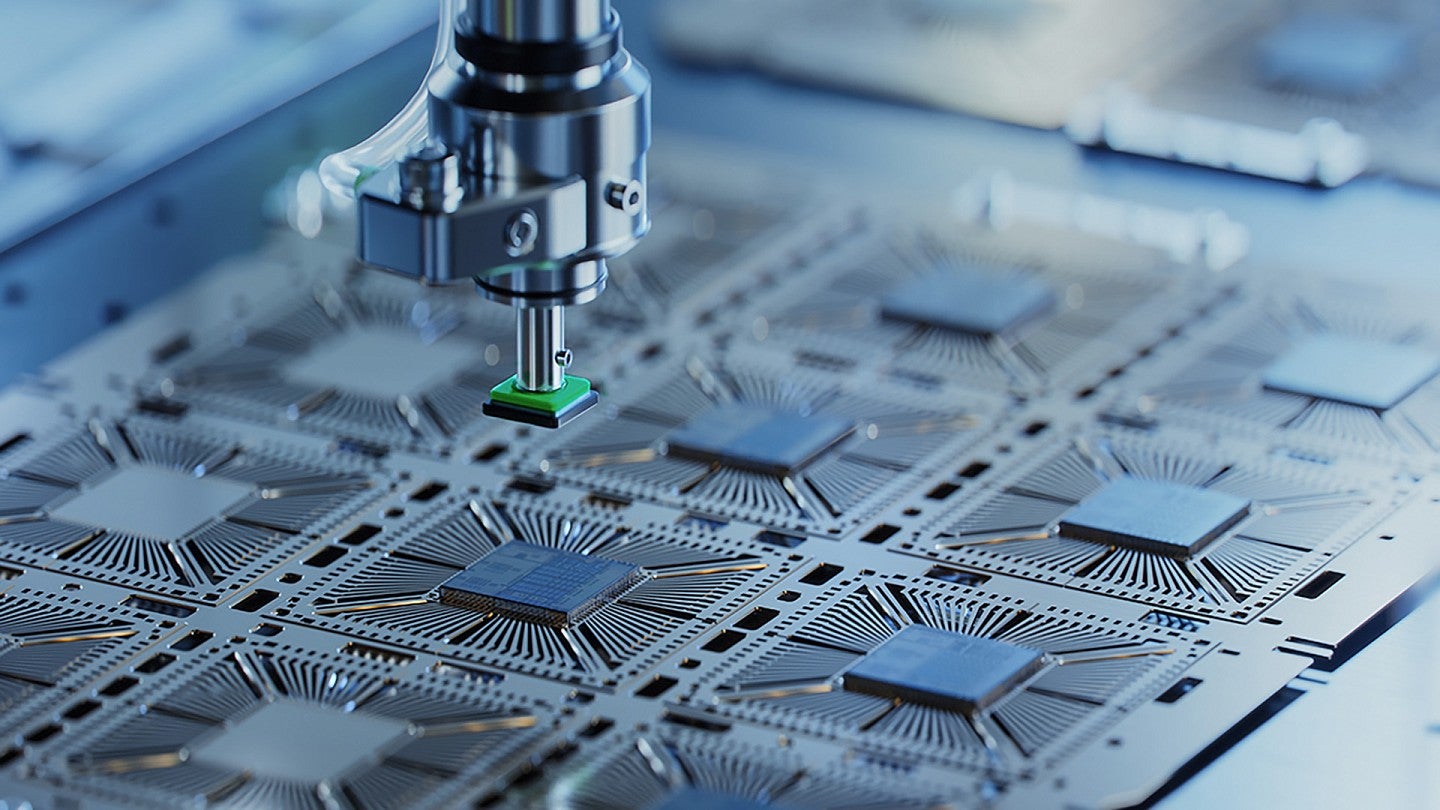
UO semiconductor programs to expand with $2M from state
The university could double the number of students it sends to industry jobs via applied master’s programs
The University of Oregon is set to double its capacity to train students to enter the semiconductor industry workforce in the coming years, thanks to a $2 million investment from Oregon’s state legislature.
The funding will help increase the number of people in Oregon who have the skills to work in the semiconductor industry, making computer chips and developing greener, more energy-efficient production processes.
“The semiconductor industry is pivotal for the U.S. economy; chips drive everything,” said Stacey Wagner, assistant vice president for master’s programs in the UO’s Phil and Penny Knight Campus for Accelerating Scientific Impact. “We wanted to increase our impact on the workforce by increasing the capacity of our master’s degree programs.”
Growing the semiconductor workforce
The investment will be used to purchase scientific instruments that provide essential hands-on training for students in semiconductor research, design and fabrication. That will allow the UO to raise enrollment in the semiconductor track of the Knight Campus Graduate Internship Program, an accelerated applied master’s program that provides a pipeline to industry jobs.
Equipment purchases also will benefit other applied internship master’s programs including optical materials and devices, quantum technology, electrochemistry, and advanced materials analysis and characterization. Those programs all send graduates into Oregon’s semiconductor industry.
Semiconductors, or computer chips, are found not just in computers but also smartphones, cars, medical equipment and countless other pieces of technology. Chip technology has increased by leaps and bounds over the past 60 years, as chips became exponentially smaller and faster. But chip production hasn’t kept up with increased demand, creating an urgent need for more production. And much of that production currently occurs overseas.
Expanding semiconductor research and manufacturing in the United States is a major national priority. Through the 2022 CHIPS and Science Act, the federal government has invested more than $280 billion into bolstering the U.S. semiconductor industry and supporting research and development of better electronics manufacturing processes and technology.
It’s also a top priority for Oregon, as evidenced by the state’s recent funding to the UO. Oregon is the leading producer of chips in the U.S., so the UO is well-situated to help expand the industry within the state.
“This funding ensures UO students have meaningful opportunities as they prepare to take on high-demand jobs in the semiconductor industry right here at home,” said Oregon Rep. Hai Pham, a Democrat representing District 36 in the northern Willamette Valley who championed the new state investment. “By expanding training programs and providing cutting-edge equipment, we’re giving our students a running start while securing Oregon’s leadership in this critical sector.”

An investment in the future
The funding will be used to purchase equipment such as electron microscopes, used to get an atomic-level view of new materials developed for use in chips. Investment in other instruments will allow students to learn photolithography, the process by which printed circuit boards are made.
Much of the equipment will live in the Center for Advanced Materials Characterization in Oregon, a shared-resource facility at the UO. Undergraduates and doctoral students in the sciences also will benefit from the equipment.
UO applied master’s internship programs currently send about 40 students a year directly into semiconductor industry jobs. With the new equipment, that number could double.
The master’s programs not only support key Oregon industries but also offer students an attractive, accessible pathway to rewarding science careers. Accelerated master’s students train for nine months at the UO then transition to a paid internship that gives them real-world work experience in the science industry.
“Thanks to the Knight Campus Graduate Internship Program, I have achieved my educational dreams and feel prepared to conquer my professional goals as a lab manager within the semiconductor industry,” said Rachael Runion, a 2023 graduate of the program’s semiconductor track who is currently employed at Intel.
The new funding will have a long-term positive effect on Oregon’s semiconductor industry by helping support more students like Runion.
“The UO is excited to take advantage of this opportunity by training more students to enter this vital sector,” Wagner said.
See how careers are made
The Knight Campus Graduate Internship program specializes in preparing students for high-tech jobs by teaching them how to apply their knowledge to real-world problems. Learn more about the program and its student success stories.

